A Hundred 'Days in Old New Castle'
Exploring 100(+1?) Years of the Colonial Home and Garden Tour Event
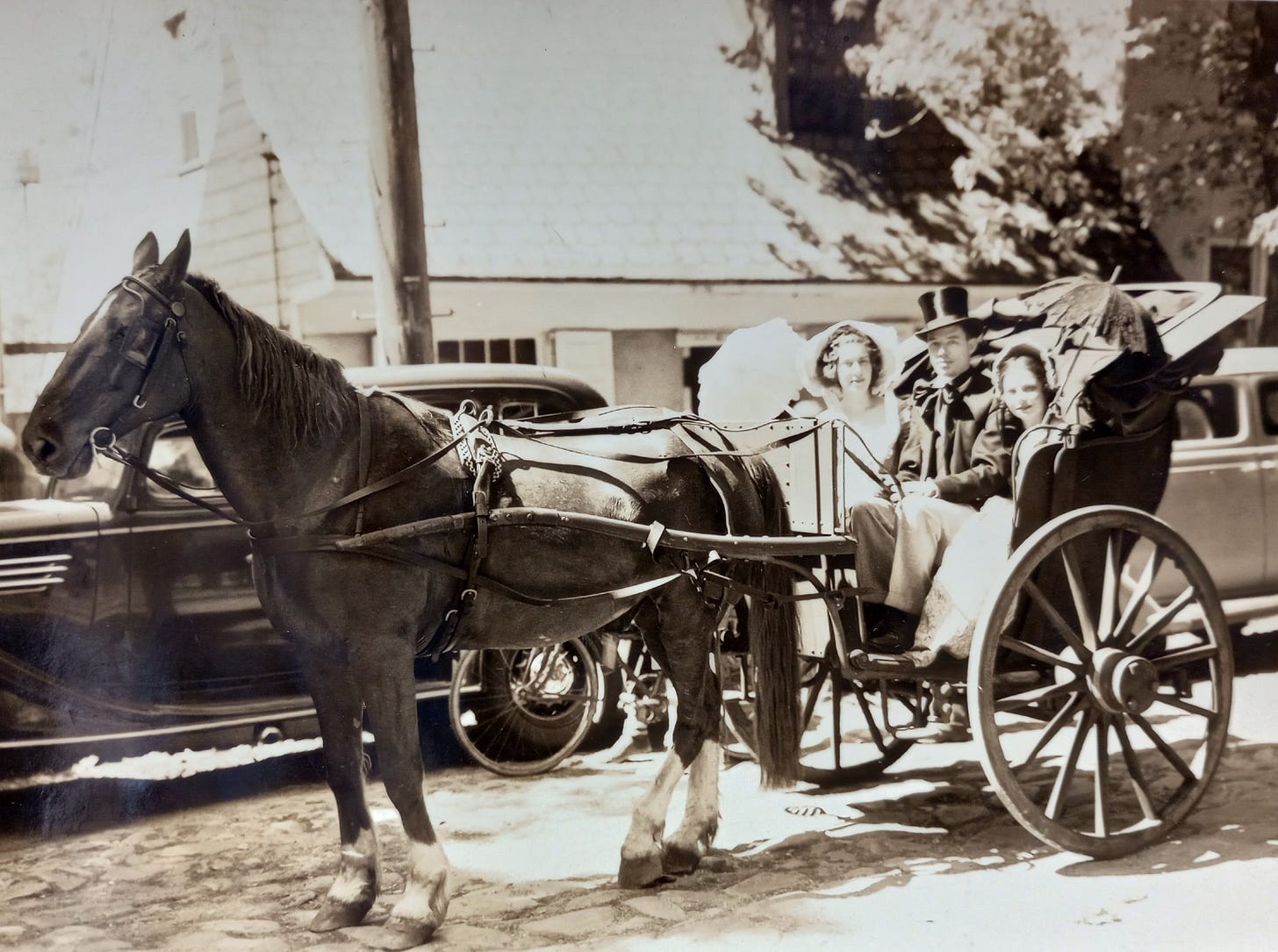
On a sunny day in May of 1966, the family of Mr. F. M. and Virginia Wagner - a young couple with their daughter - took a day trip to the City of New Castle. While the town had not yet been declared legally ‘historic’ (that would come the following year) local history was nonetheless at the heart of their trip, as they donned Colonial-era dress to join in that year’s ‘Day in Old New Castle’ festivities.
During the Wagners’ visit that year, they stopped at the Dutch House, occupied for the day by docent Louise Parisano. After touring and learning about the ancient little house, the family took a keepsake photo in front of the place with Ms. Parisano, promising to send a copy to the docent in thanks for her hospitality.
The rest of the year passed, and the next Day in Old New Castle, but no photo.
However, New Castle, the ‘Little Dutch House’ and Ms. Parisano clearly made a strong impression on the family, or at least on Virginia Wagner. For two years later, in 1968, she made good on what might, for many, have been an idle promise.
Her lovely note commemorating the family’s good time at the event two years prior, and expressing regret that they couldn’t make it again, is reproduced below - with the photo it accompanied, of course.



Contents:
A Century of Celebrating ONC
A Day in Old New Castle (DIONC) has been delighting locals and visitors alike as a community celebration of the riverside town’s colonial charm for five generations. On Saturday, May 17, 2025, the much-loved event returns for its 100th Anniversary.
As she has since 2016, occasionally with co-chairs, former New Castle Court House Museum supervisor Cynthia Snyder is leading the committee for this year’s event. Her love for the event is very clear whenever she discusses it:
A Day In Old New Castle is important as a community event in that it brings together residents and businesses to produce an opportunity for visitors to experience our unique historical city and learn about the importance of New Castle, and the events that took place here, in the settlement and founding of our State and also our National government. From 1925 to 2025, DIONC has been a historical record of our city’s changes and growth.
New Castle Mayor Valarie Leary is also no stranger to the event. “As one of the former chairs of A Day in Old New Castle, I understand the effort and dedication involved in organizing this event,” she shared. “Therefore, I want to acknowledge everyone who has, over the years, poured their heart, soul, sweat, and tears into organizing this treasured tradition. It’s a chance to celebrate our heritage, connect with neighbors, and experience the charm that makes New Castle truly unique.”
“The 100th anniversary of the event is an especially remarkable occasion, leading us into Delaware 250 and America 250 in 2026,” Leary added.
In New Castle, even our celebrations of history are, themselves, historical.
In honor of this 100-year milestone, here is a look at the history of the event - how it started, how it has changed over the years, the effects it has had on the life of the city, and what to look forward to in this year’s centenary edition of A Day in Old New Castle.
In the Beginning, there was Immanuel (Episcopal Church on the Green) … and Anne Janvier
The inception of the “longest-running private House and Garden tour in America” was intended to be a one-off fundraiser. In 1924, a group of ladies from the parish of Immanuel Episcopal Church (IEC) arranged a day of private tours as a way of generating extra funds to address maintenance needs in the (then) roughly 220 year old church. Despite doubts among some, it was a huge hit, prompting an encore that, in 1925, would be called “A Day in Old New Castle” for the first time, and established as an annual event, setting the stage for the 100th anniversary in 2025.
The leader of that group of event founders, Anne Read Rodney Janvier, would go on to chair DIONC for many years - among her many other efforts on behalf of the city. In 1974, the 50th Anniversary event was dedicated to her memory, crediting the original idea for DIONC to her and providing interesting details about its origin.
In 1924 Mrs. Janvier … suggested to the Vestry an “open house” tour of the historic homes of New Castle as a means of raising funds for badly needed repairs to the church buildings. This idea met with mixed reactions. One member thought it doubtful that people would “pay a dollar to see ten old houses.” Another parishioner thought a shad dinner would be a better idea. Mrs. Janvier persisted… and the Vestry acquiesced.
The immediate success of the tour in the first year led to its continuation as a “Day in Old New Castle,” held on the third Saturday in May except for a brief interruption during World War II.
… For many years, Mrs. Janvier headed “A Day in Old New Castle” herself, assisted by a small group of ladies of Immanuel Church, and Mr. James Rogers Holcomb, who handled the business affairs of the committee…
… In recognition of Mrs. Janvier’s vision and devoted service to Immanuel Parish, the 1974 [DIONC] committee… wishes to dedicate the Day’s events to her memory.
In her brief profile of Mrs. Janvier last year, Linda Suskie clarified that, “the idea came from Reverend Joseph Earp, pastor of [IEC], and he called the first meeting to discuss [it]. But Anne Janvier presided at that first meeting and organized and chaired the first Day in Old New Castle in 1925. Anne Janvier continued to chair A Day in Old New Castle for its first fifteen years until her death in 1940.”
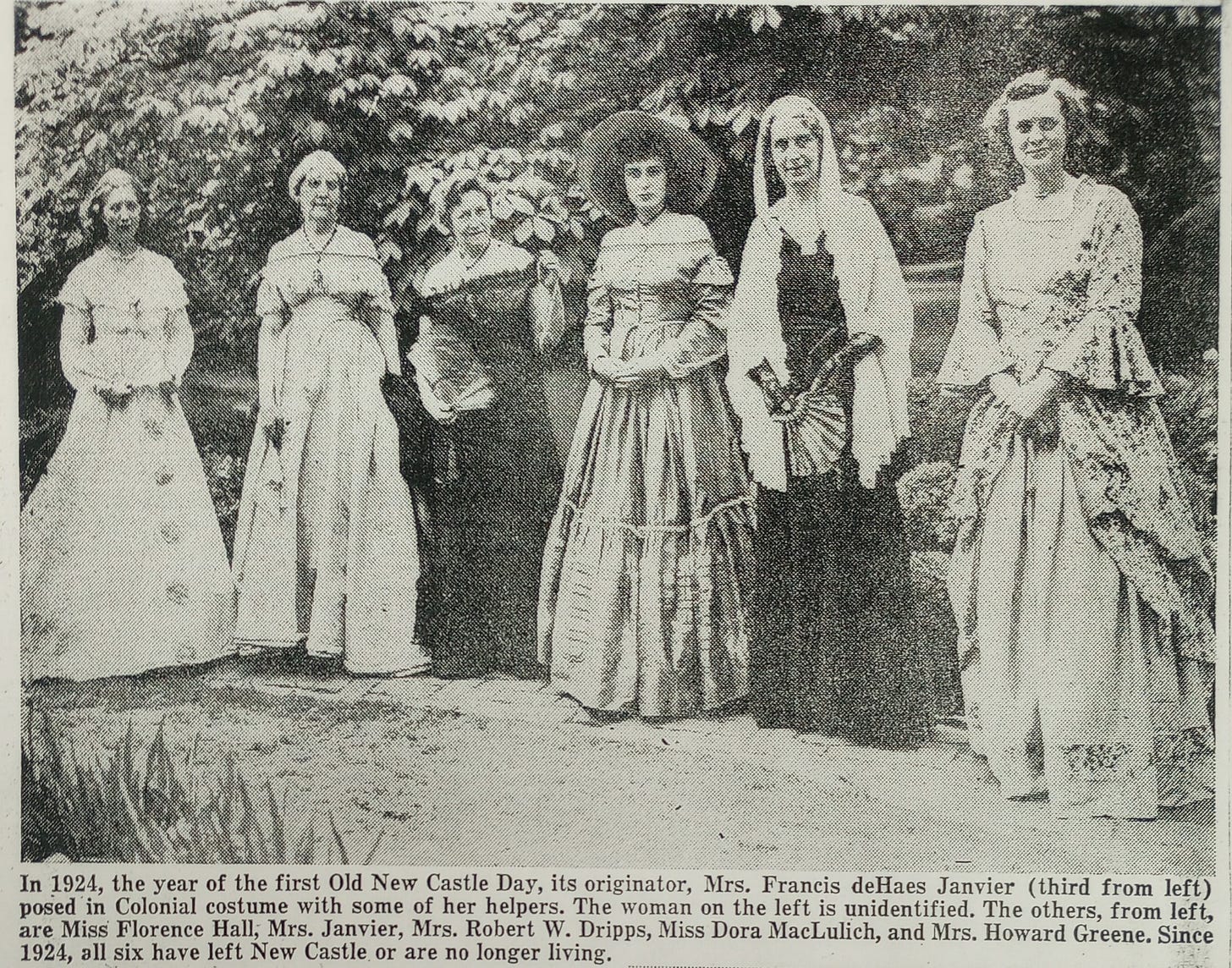
With tours of roughly a dozen to eighteen historic homes and gardens, the earliest iterations of ‘A Day in Old New Castle’ were fairly simple. One special feature of the first DIONC (and those that followed) was the opening of the historic Read House, then a private home. As recorded by Constance Cooper in 350 Years of New Castle, Delaware:
The Read House first opened informally to the public in May 1924 as a featured attraction in the first ‘Day in Old New Castle.’ [DIONC]… was organized by Anne Read Janvier, a descendant of George Read.
The 1929 event program offered details on sixteen houses open for tours that year as well as a luncheon at the Parish House “at a moderate price,” and a “sale of antique furniture and Colonial articles” on The Strand in the afternoon (see below).
Year by year, the event grew, with its proceeds becoming an important annual fundraiser for the church, which was DIONC’s only beneficiary for the first decade or so. An accounting of those years from Mary Shaw, below, displays event revenue during the 1920s and early 1930s. (Note that $1000 in 1930 would be approx. $18,700 “in today’s dollars,” according to the inflation calculator on BLS.gov.)
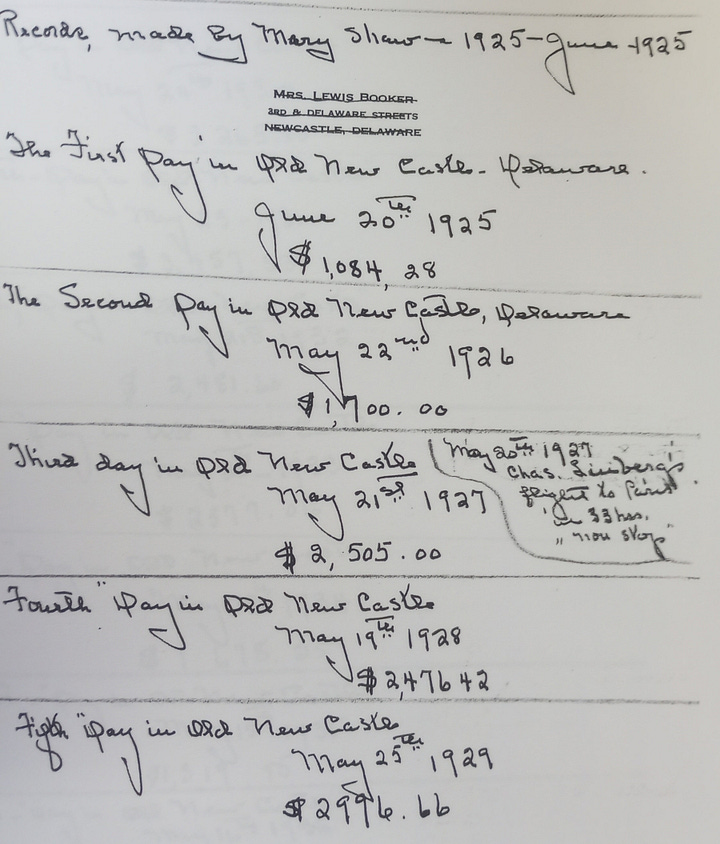
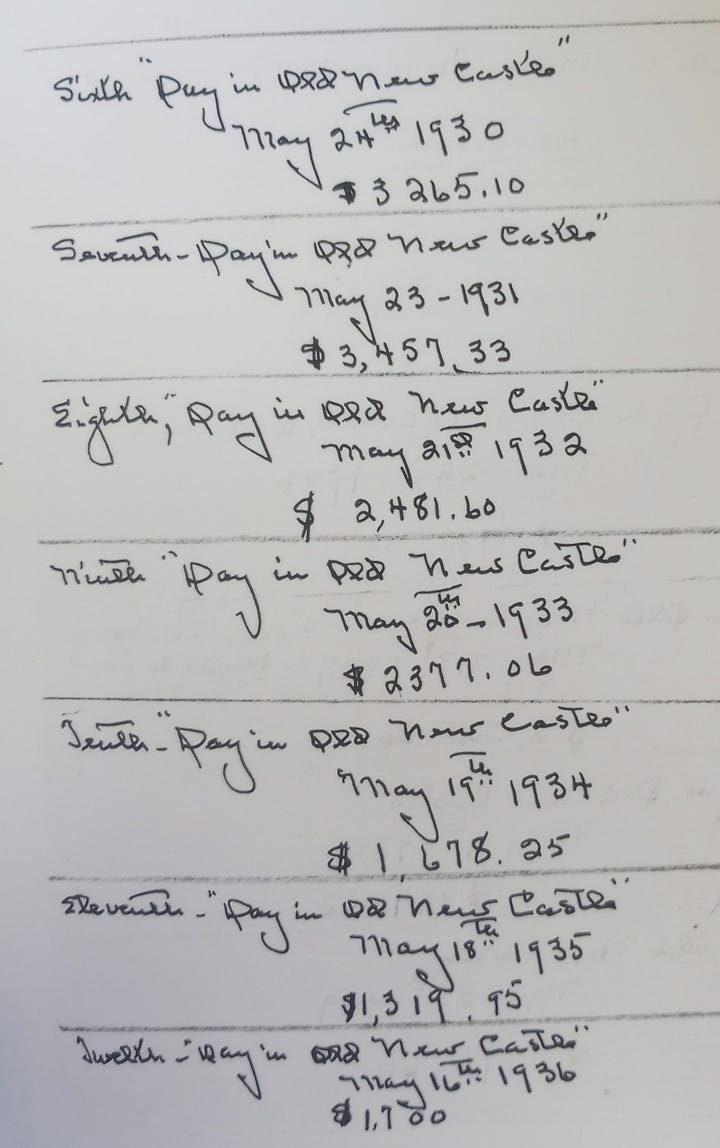
Far from being a flop - or less compelling than shad - DIONC remained strong even during the Great Depression, providing vital maintenance funds for IEC and a yearly day for New Castilians to come together in a celebration of pride in their community.
The program below, from 1929, lists the homes that were open that year. DIONC would use this adorable, quarter-fold brochure format well into the 1940s.


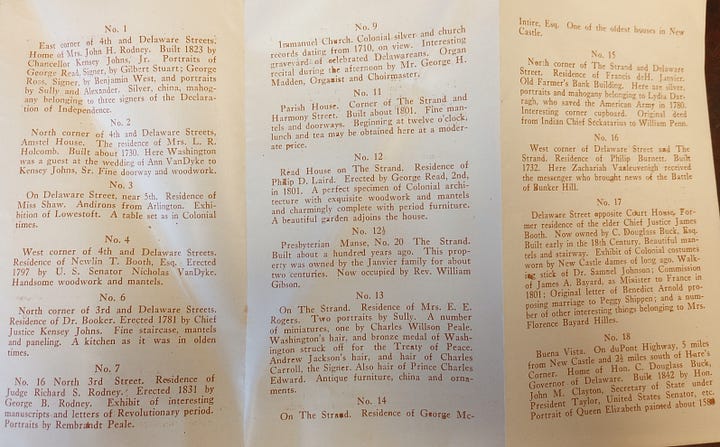
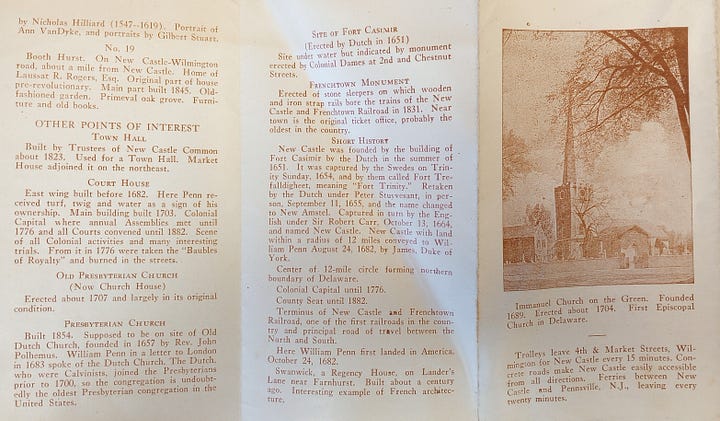
1930s-1950s: A Local Tradition Develops
By the mid-1930s, DIONC had begun to draw regional attention to New Castle, as the event garnered articles in Philadelpha newspapers (both previews and reviews). A 1934 Public Ledger story estimated that 2,000 visitors had attended that year’s event, for which eighteen private homes had been open.
In the following decades, DIONC - which also became known as ‘New Castle Days’ - continued to flourish and grow. During these years, garden tours were added and then expanded, organized by Arasapha Garden Club after its formation in 1934.
The oldest known video from A Day in Old New Castle, shot by M. H. Hill in 1931, was conveyed years later by former city mayor Don Reese to local historian James Meek for preservation. That video, to which City Topics has added contemporary music with Mr. Meek’s permission, is below and on YouTube.
Some of the popular DIONC attractions that are part of the event today first became fixtures during these early decades, including:
Recitals & Performances from local choirs, bands and artists,
Plein Air painting on The Green,
Displaying of antiques and historic artefacts, and
Townspeople and visitors donning Colonial or Victorian costume.
A few interesting early features that did not survive to the present included:
Antique auto rallies held at the Hermitage,
Kids dressed as ‘Colonials and Indians’ reenacting Penn’s landing in New Castle,
Pageantry around a May Pole on the Green,
A ‘Queen Anne Silver Communion Service,’ and
Gravesite tours of New Castle’s ancient cemeteries and interesting tombs.
By the late 1950s, New Castle Days had come to include additional local churches and community groups, with the former offering extra luncheons and ticket sales, while the latter got involved as docents and helpers for the increasingly sprawling event. Thus DIONC began to include more of the community.

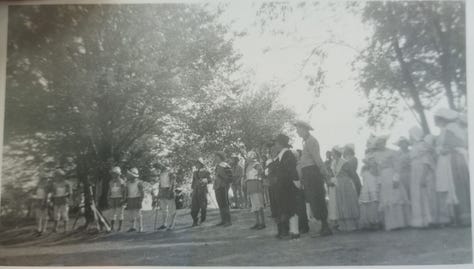

In 1959, after years of simply-printed brochures, the DIONC Committee introduced the event’s first full-sized program booklet, which - printed early - shared details of over forty homes that might be open, promising that roughly 25-30 would be available to tour on the actual day.
The 1959 program also touted the recently-completed restoration of New Castle Court House Museum, and introduced advertisers to the event for the first time, featuring paid promotions from DE and New Castle businesses. This was to help defray costs and maximize the profit from the event, which by this time IEC was splitting with its fellow churches.


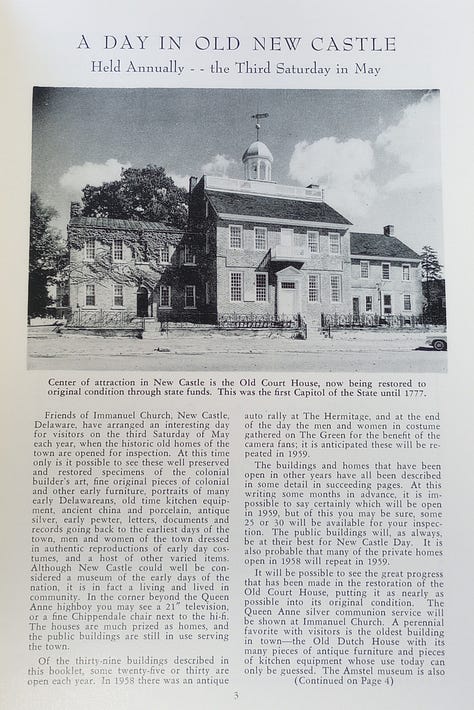


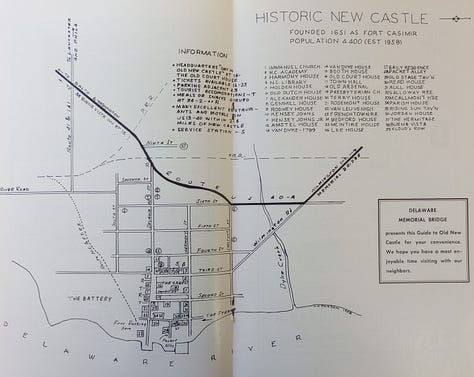
1960s-1979: Regional Success, National Recognition - DIONC Hits the Big Time
In the ensuing years, A Day in Old New Castle became a local and regional phenomenon, with scores of homes and gardens open the third weekend of most Mays and attendance estimates in the 1960s and 1970s occasionally approaching ten thousand according to newspapers from the time.
During this period, the event was featured in multiple regional newspapers and even national style magazines.

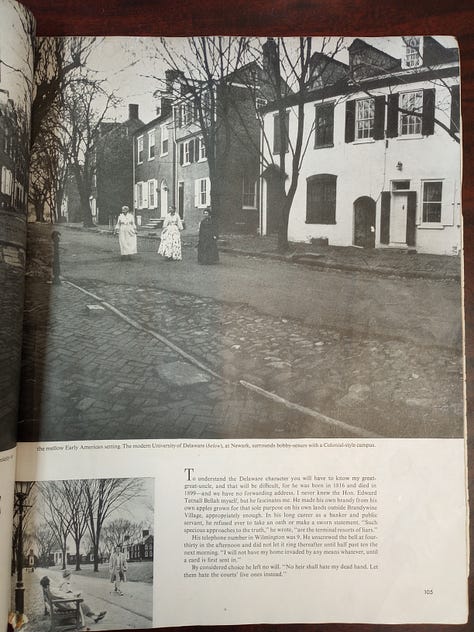



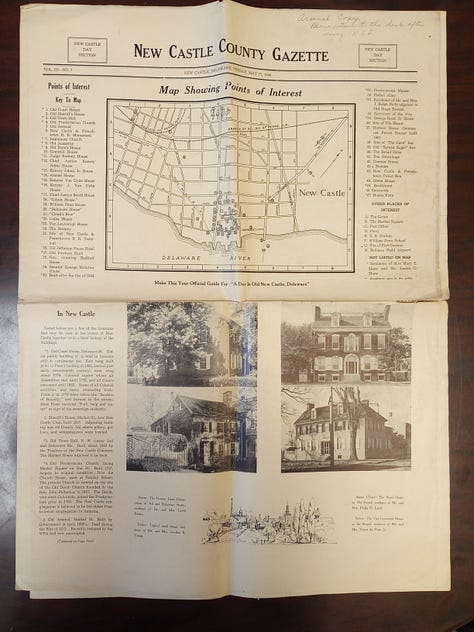



Often focused largely on accommodating ever more people, changes to DIONC during these years included…
Free motorized transportation around town, including to more distant open houses like Buena Vista and the Hermitage,
An Evensong service at the end of the day’s events,
Food and drinks offered from Good Will Fire Co., the Century Club, Academy Building and other locations,
A Lost and Found operated at the Frenchtown RR Ticket Office,
Colonial military ecampment reenactments and demonstrations,
Maypole Dances on the Green, and more.
In the 1960s, the enthusiasm for New Castle’s colonial history and the commitment to preserving and sharing its physical remnants, nurtured for so many years by DIONC, paved the way for the 1967 designation of the entire Historic District as a registered national landmark. The decade’s savvy DIONC committee also, of course, capitalized on this important recognition in the following years’ promotional materials.
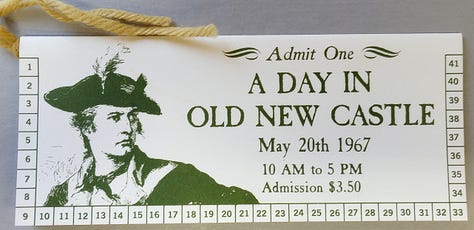
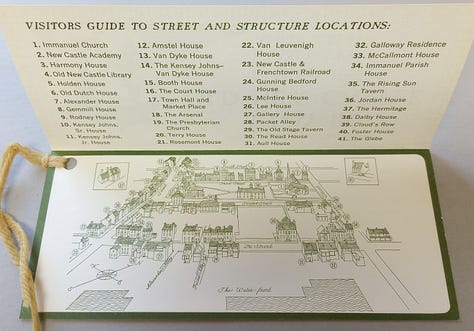


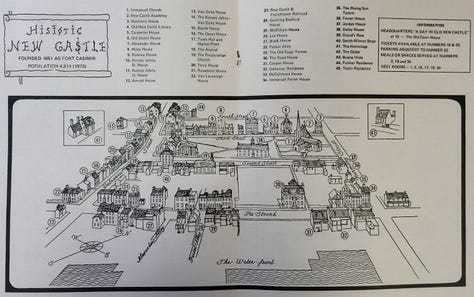

The growth over this period was only possible due to a small army of volunteers and IEC community partners mobilized for the event each year. By the late 1970s, almost every organization and business within a few blocks of Delaware Street - and some well beyond the historic area - was involved in the annual event.
Below are assorted photos of New Castilians and visitors dressed up for DIONC events during this period…
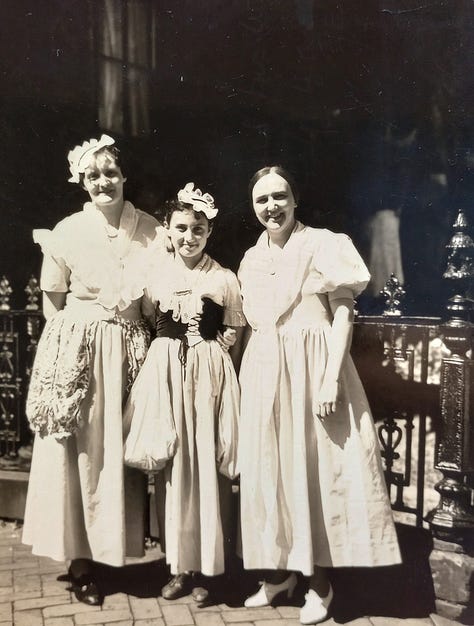





1980-1983: Recovery from New Castle’s other ‘Great Fire’
As solemnly recounted on the ‘History’ page of IEC’s website…
On February 1, 1980, embers from a fire in the marsh by the river caught in the wind and landed on Immanuel's roof. The church was badly damaged in the ensuing fire, one of the more traumatic events in the town of New Castle's long history. Talk to any long-time resident of New Castle today, and they most likely will be able to tell you exactly what they were doing when they heard that Immanuel was on fire.
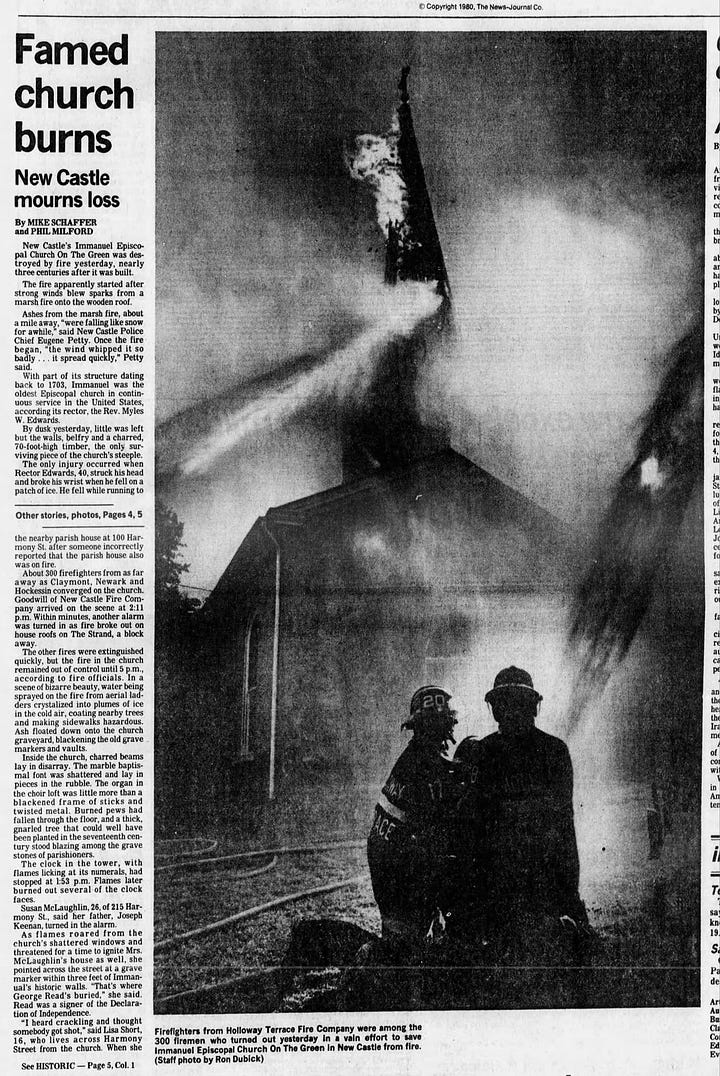

The IEC recounting continues…
Although the building was heavily damaged, the spirit of the congregation remained strong and faithful. They resolved to rebuild the church and continue to worship on the same spot where Anglicans had worshipped for so many years.
In the wake of the destruction, among other fundraising efforts, ‘A Day in Old New Castle’ once again became critically important to meeting the needs of the parish during the long restoration process. A Philadelphia Inquirer advertisement for the 1980 event, below, shows the “charred halls” of the church among other points of interest.

With help from throughout the community, as well as the wider US Episcopal congregation, the work was completed over a few years. “The church was restored to its 1822 William Strickland design,” IEC’s website notes, “with modifications to the sanctuary to accommodate modern liturgical needs. The church was rededicated on December 18, 1982.”
DIONC attendees in the following years were offered updates and details about the restoration 1981-1982. Then in 1983, following the rededication, a gratefully celebratory IEC congregation and DIONC committee welcomed New Castle, and its many visitors, back into the historic church.
A series of letters appearing in event programs from the period describes the parish’s interregnum and subsequent joy, below.
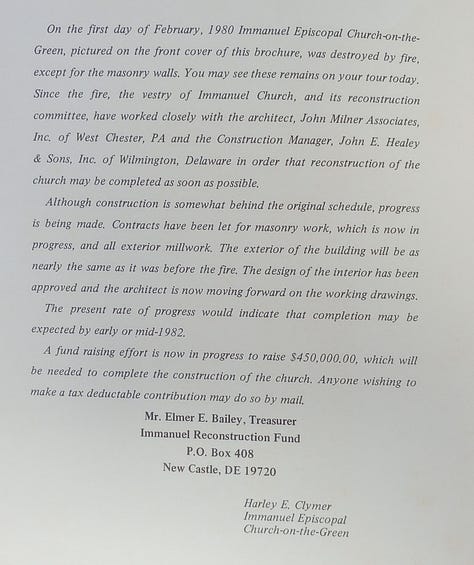





1984-2014: Modern Changes to a Historic Event
The outpouring of good will and community spirit around the restoration of IEC, as well as a resurgence of interest in historic preservation in the late 1980s, fed into another very good stretch of years for ‘A Day in Old New Castle.’ By the mid-1990s, the DIONC program listed over a hundred homes as places of interest. However, the largest number to be opened in any one year reached its zenith in the late 1980s, at around forty homes, and about the same number of gardens.
Programs from this period were hefty and lavish, with photos and detailed descriptions of all 100+ homes’ interesting architectural details, fold-out maps and returnable forms, and lots of local advertisements. Day-of inserts added details of a growing plethora of additional activities alongside the home and garden tours.
Activities and features added to DIONC during this time included:
Full-day schedules of Instrumental, Vocal and Dance performances,
Mock Trial exhibitions in New Castle Court House,
Blacksmithing and other colonial artisan demonstrations,
A 1999 Cannon Battle (whaaat?) at the Wharf, between the Kalmar Nyckel and the Second Pennsylvania Regiment,
Archaeology demonstrations by UD grad students working at sites in town,
Military drills and historical encampments on The Green,
Horse-and-carriage rides around the district,
Fashion presentations and workshops,
Silent auctions,
Children’s Crafting and Play/Gaming areas,
Historical puppet shows,
Musket and Cannon fire demonstrations, and much more…
During this period, ‘A Day in Old New Castle’ matured as a local landmark in its own right: a full-on festival throughout the Historic District that got much of the city involved. As it had in the past, IEC’s DIONC committee sought to share the largesse from the beloved event. Beneficiaries during this time included the Food Bank of Delaware, the New Castle Senior Center, and others, in addition to continued maintenance of parish buildings.
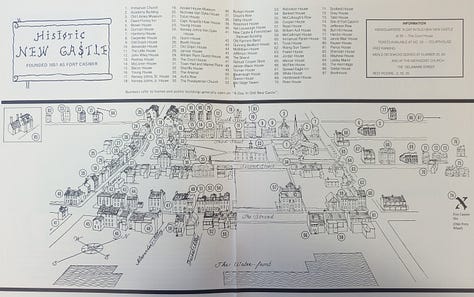








Unfortunately, human institutions - however successful - rarely maintain the same momentum forever. As it had at times in the past, interest in DIONC began to wane in the 2000s. The crowds of visitors contracted a bit. Meanwhile, among parishioners and locals - many of whom had moved to town well after the explosion of historic pride in the 1960s and 1970s - fewer each year volunteered for the event.
In 2010, for the first time since World War II, it looked like ‘A Day in New Castle’ would have to be cancelled. Indeed, the News Journal/Delaware Online reported that it had been… before later reporting that it had been saved by a private non-profit group, the Historic New Castle Alliance (HNCA), that would run the event for one year to give IEC’s committee a break.



The Immanuel-led team did return for 2011 but, within a few more iterations of the event, the “volunteer fatigue” referred to in that article by Rev. Godden had become too great. Event features were trimmed to make it more feasible, which reduced public interest, creating an unfortunate feedback loop. It became clear that the parish could not continue, at least not as primary organizer of the event.
2014-2024: From the Steeple to the (Main) Street
In 2014, DIONC came to a crossroads. After nine decades of stewardship by a committee working under the IEC Vestry, there were insufficient volunteers for the committee or event. As is natural in any institution over ninety years, the church’s needs had changed, as had the interests and capacities of parishioners. It looked like the event might have offered its last tour at DIONC that year.
As the reader may have surmised, however, it did not. Instead, ‘A Day in Old New Castle’ became the province and pride of HNCA. The private non-profit and ‘Main Street USA’ affilliate had been founded as ‘the Oxygen Group’ around 2008 with a focus on community development. It would later - around 2016 - rebrand as the New Castle Community Partnership (NCCP).
So we return to Mayor Leary, who was HNCA/NCCP president at that time and spearheaded DIONC’s transition, and current event chair Cynthia Snyder… “I went to Fr. Keene and asked if NCCP could assume the event,” Mrs. Leary explained. “They agreed, and so NCCP started with the 2015 ADONC.”
“Not wanting to see [DIONC] disappear,” Synder added, “the Partnership stepped up to take responsibility for continuing the New Castle signature event… As site manager of the Court House Museum, I had always been involved with DIONC. When the Partnership took over then I became a committee member in charge of entertainments, historical reenactors, and vendors.”
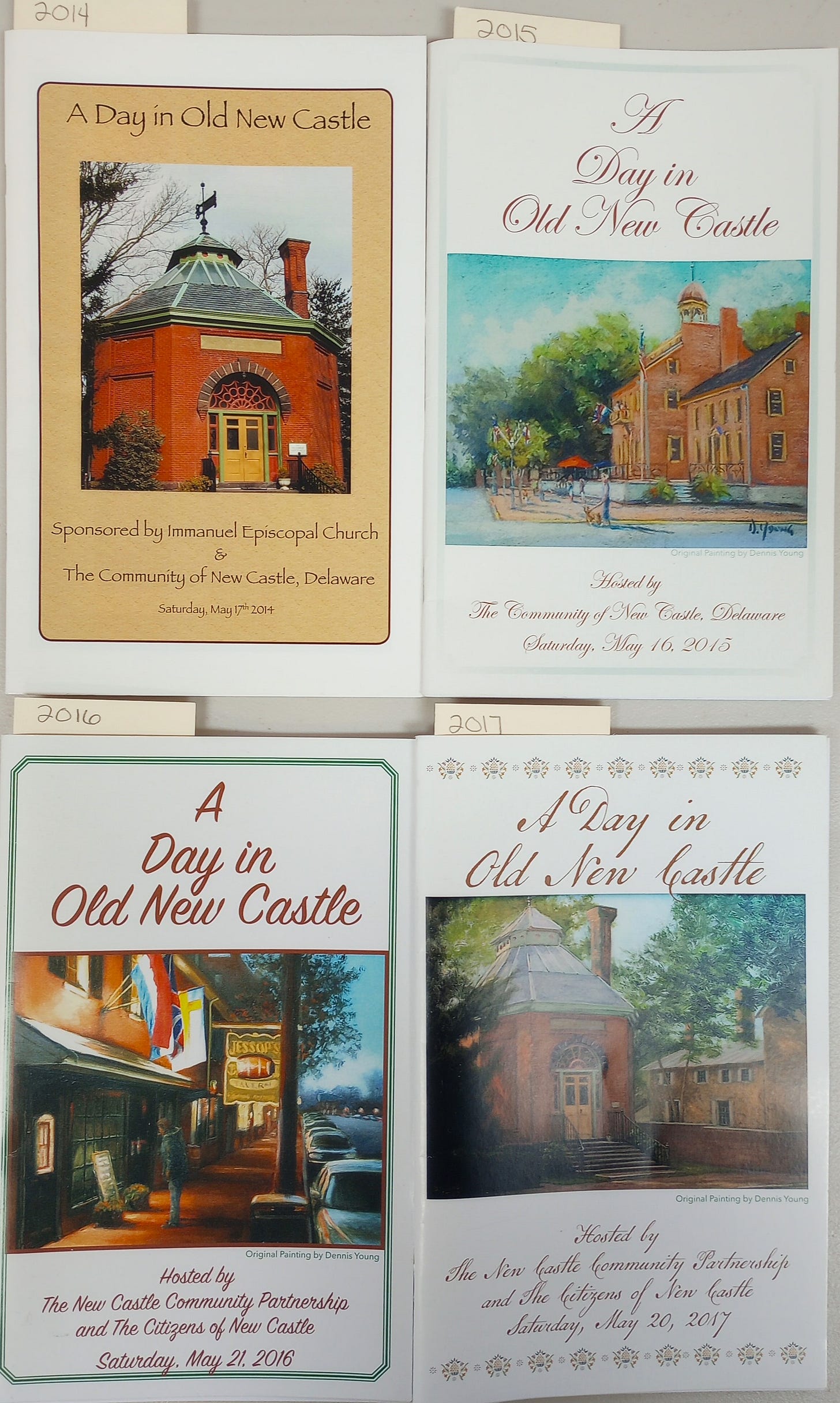
Beyond the Partnership and the Court House Museum, many institutions and organizations became involved in ensuring DIONC continued, including long-time event partners as well as new sponsors and associations. Snyder offered a non-comprehensive list: “We partner with many non-profits such as:
New Castle Jaycees,
[several] local churches [including IEC],
The Trustees of the Common, and
M&T Bank and other corporate businesses help with grants.”
Mrs. Leary clarified that, at first, “Arasapha got the homes and gardens; Friends of the Library did ticket sales pre- and at the event. Arasapha now [handles just the] gardens, and others do the homes.” The Friends continue to assist with promotional/group pre-sales and running the event’s registration/info area at the Court House.
The Partnership and its partners have continued the DIONC tradition while adding their own touches and flourishes to keep the event fresh for modern audiences. Ms. Snyder recounted some of the changes…
The house and garden tours stayed basically the same, but we added new activities for the visitors. We started more family-oriented and hands-on activities for children. We added [back] extra attractions like reenactment groups, entertainments, food vendors, music and the Kalmar Nyckel tall ship. Dennis Young added his Plein Air Painting Competition which is a popular addition. Some years we had special themes like Civil War, pirates, a colonial marketplace, and [last year] the Great Fire of 1824.



One thing that has not changed, is that the proceeds from the event continue to be split among the non-profit partners that come together to make it work each year.
With the constant churn of people involved directly in NCCP and the DIONC committee, the ebb and (in some recent years, sadly constricted) flow of volunteerism, and the ever-changing expectations of digital-age event guests, ‘A Day in Old New Castle’ continues to change.
For example, having chaired quite her share of successful DIONC events over the last decade, Ms. Snyder will step back from the role after this year. This news led to some speculation that the Partnership might let the event reach 100 and ‘call it a Day.’
“At first there was some concern that there would be no one willing to Chair the event,” Snyder acknowledged. “But that problem has been solved. The New Castle Community Partnership will continue DIONC with a new Chair. We look forward to the 101st year!”
Mrs. Leary added, “Volunteers are always needed, so please reach out if you would like to do so. A couple of hours of your time would be greatly appreciated.”
The chair of DIONC 2026 will be announced following this year’s event.
2025: Celebrating 100 ‘New Castle Days’
On Saturday, April 17, 2025, New Castle will celebrate the 100th ‘Day in Old New Castle’ with an array of activities and events designed to evoke both the first DIONC event and the outgoing, art-deco-suffused spirit of the 1920s from which it was born.
Activities will include:
Dock tour on the Kalmar Nyckel (ticket)
Historic houses and gardens open for tour (ticket)
Museums and church tours (ticket)
1900-1940 antique cars from the Brandywine Antique Car Club (free)
Steam Cars from the Marshall Steam Car Museum (free)
The Wheelmen antique velocipedes and bicycles (free)
1st Delaware Regiment Encampment/Ft. Casimir Garrison Encampment (free)
Colonial Artisans and crafts (free)
Children’s activities (free), and
the concurrent New Castle Saturday Market
An entirely new feature of the DIONC festivities this year will be the ‘1920s Swinging Soiree,’ to be held in the evening at Zollie’s Shaw Alley venue.
Tickets for DIONC itself, as well as the Soiree, are available at HistoricNewCastle.com. DIONC visitors paying day-of will get $1 off ticket price if they are dressed in Colonial or Victorian period clothing.
…
As she prepares to oversee this momentous anniversary for ‘A Day in Old New Castle,’ Cindy Snyder shared what has motivated her to keep at it so long. “I love to see visitors come and be amazed at the history and beauty of our town,” she said. “It is wonderful to see so many residents giving of their time and talents to produce this event. Kids have a lot of fun, and that is also great to watch.”
Thanks for reading!
Huge thanks to Mike Connolly and New Castle Historical Society, as well as local newspaper archives, for making the research for this story possible. There were so many sources, sometimes slightly conflicting… If any details are off, please reach out, as we’re always happy to receive feedback and, if needed, make corrections to the web version of a story.
Thanks also to Cindy Snyder and Valarie Leary for speaking to us for this feature, and to Dorsey Fiske for providing some background info on the header photograph with Mr. Cooper.
Hope to see you on the bricks for A Day in Old New Castle!
.






